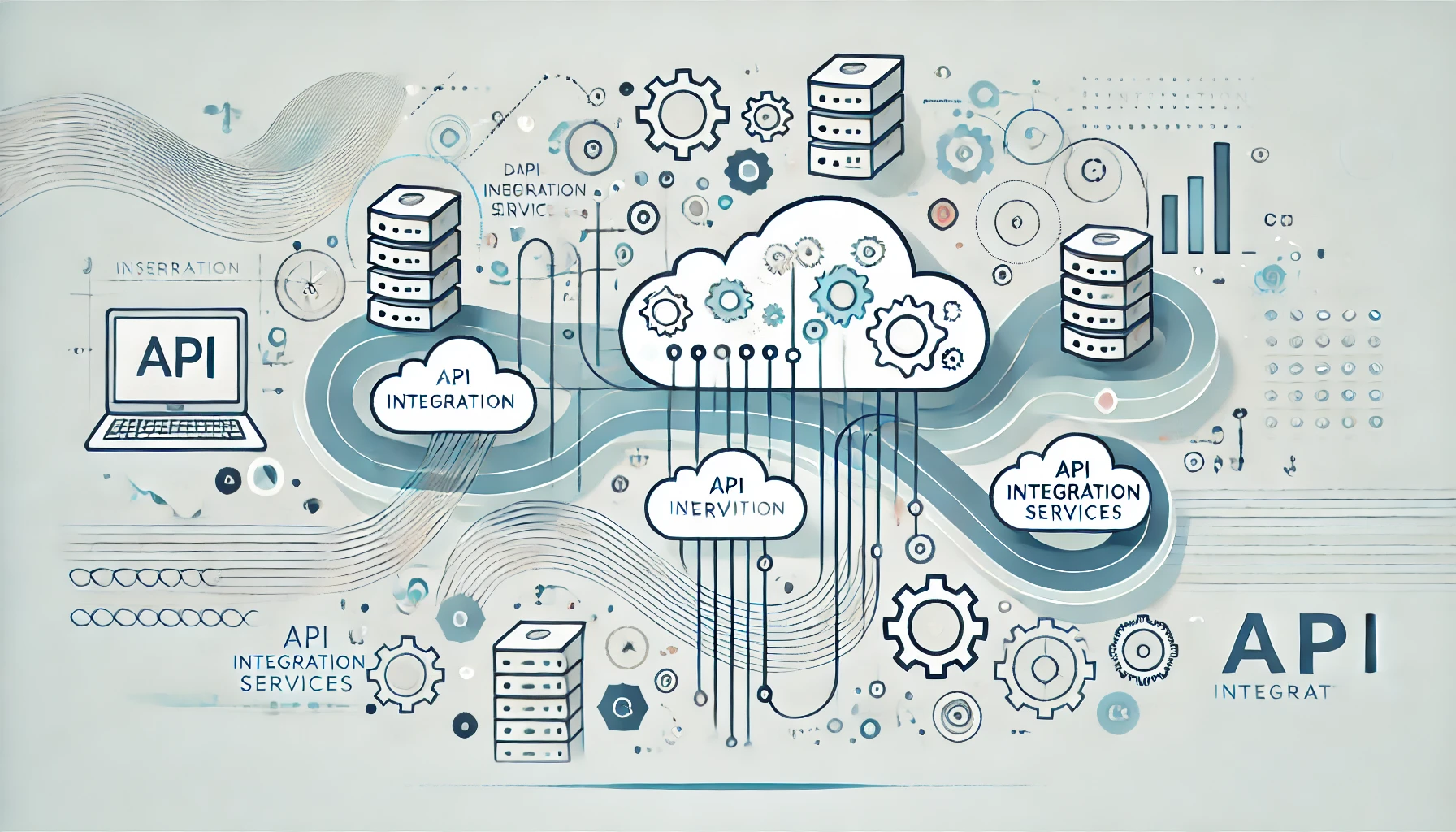You may not be aware that aspects of API integration services encompass seven critical aspects that are pivotal for seamless system interactions. From ensuring data flow to managing obstacles and enhancing reliability, these key components play a significant role in the success of integration projects. Understanding these aspects can be the differentiator between a mediocre integration and a highly efficient, scalable, and reliable system. By grasping the intricacies of each aspect, you can unlock the full potential of API integration services and propel your business towards digital transformation and growth.
Benefits of API Integration
When integrating APIs into your systems, the advantages are manifold. One key benefit is cost efficiency. By leveraging APIs, you can streamline processes, reduce manual work, and eliminate the need for extensive custom development. This efficiency translates into cost savings for your organization as you optimize resources and enhance productivity. Moreover, API integration can provide a competitive advantage. By seamlessly connecting disparate systems and enabling data exchange in real-time, you can respond quickly to market changes, improve decision-making, and enhance customer experiences. This agility and responsiveness give you an edge over competitors who may still be grappling with siloed information and outdated processes. Embracing API integration not only optimizes your operations but also positions your business as a forward-thinker in today’s fast-paced digital landscape. By harnessing the power of APIs, you can drive innovation, improve efficiency, and gain a competitive edge in the market.
Types of API Integration
API integration can take various forms based on the specific requirements of your systems and applications. The common types of API integration include point-to-point integration, middleware integration, and API-led connectivity. Point-to-point integration involves connecting two systems directly, which can lead to scalability issues and increased complexity as the number of connections grows. Middleware integration uses a middle layer to connect multiple systems, providing better scalability and easier maintenance. API-led connectivity is a modern approach where APIs are designed and managed centrally, promoting reusability and agility.
Common challenges faced in API integration include ensuring data security, maintaining compatibility between systems, and managing the complexity of multiple integrations. However, the benefits of API integration are numerous. These benefits include improved efficiency, enhanced data accuracy, increased productivity, and the ability to create seamless experiences for users across different platforms. By choosing the right type of API integration based on your specific needs, you can overcome challenges and leverage the full potential of integrating your systems and applications.
How API Integration Works
Utilizing application programming interfaces (APIs) for integration purposes involves establishing a communication bridge between different software systems. When considering how API integration works, it is crucial to understand the flow of data and ensure system compatibility. Here is a breakdown to help you grasp the concept:
- Data Flow: APIs facilitate the seamless transfer of data between different systems, allowing information to be shared in a structured and organized manner.
- System Compatibility: It is essential to ensure that the systems involved in the integration process can effectively communicate with each other to exchange data accurately.
- API Requests: Through API requests, one system can ask another for specific data or actions, initiating the communication process.
- Response Handling: Once a request is made, the receiving system processes the request and sends back a response, enabling the systems to interact and exchange information effectively.
Understanding the flow of data and ensuring system compatibility are key components in making API integration work efficiently.
Challenges in API Integration
To successfully navigate the realm of API integration, one must be prepared to confront various challenges that can arise during the process. Two key challenges often faced are scalability issues and data synchronization. Scalability issues refer to the ability of the system to handle an increasing amount of workload or its potential to accommodate growth. When integrating APIs, ensuring that the system can scale effectively to meet changing demands is crucial. Data synchronization is another critical challenge, involving the harmonization of data between different systems to ensure consistency and accuracy. This process can be complex, especially when dealing with real-time data updates across multiple platforms. To address these challenges, it is essential to carefully plan and design the integration process, considering factors such as system capabilities, data structures, and communication protocols. By proactively addressing scalability issues and implementing robust data synchronization mechanisms, you can enhance the efficiency and reliability of your API integration services.
Top API Integration Tools
Let’s explore the landscape of top API integration tools, comparing their key features to aid you in selecting the most suitable one for your integration needs. By examining these popular tools and their functionalities, you can gain insights into how they have enabled successful integrations in various industries. Additionally, we will delve into real-world integration success stories to showcase the practical applications and benefits of these tools.
Popular API Integration Tools
When it comes to integrating APIs into your systems, having the right tools can make all the difference in streamlining processes and enhancing efficiency. Here are some popular API integration tools to consider:
- Postman: Ideal for testing APIs, it offers features for automated testing, mock servers, and collaboration tools.
- MuleSoft Anypoint Platform: Known for its robust integration capabilities, it provides tools for API design, testing, and deployment.
- Apigee: Google Cloud’s API management platform that offers analytics, security features, and developer portal tools.
- Zapier: A user-friendly automation tool that connects various apps and services without the need for coding.
These tools not only assist in compatibility testing and data mapping but also offer a range of functionalities to streamline API integration processes effectively. Whether you need advanced testing capabilities, seamless data mapping tools, or simplified automation, these popular tools have you covered.
Key Features Comparison
The comparison of key features among the top API integration tools is essential for businesses seeking the best solution to streamline their integration processes. When evaluating different tools, consider their integration strategies, which determine how well they can connect with various systems. Performance metrics are crucial for assessing the speed and reliability of data transfer. Compatibility requirements play a significant role in ensuring that the tools can work seamlessly with existing software and infrastructure. Data mapping techniques are another essential aspect to consider, as they impact how data is transformed and transferred between applications. By examining these key features in detail, businesses can make informed decisions about which API integration tool aligns best with their needs and objectives. Remember, the right tool can significantly enhance efficiency and productivity within your organization’s integration processes.
Integration Success Stories
To truly grasp the impact of API integration tools in real-world scenarios, it’s enlightening to explore Integration Success Stories. These stories showcase the practical applications of API integration tools and how they have revolutionized businesses across various industries. Here are some key elements to consider:
- Case studies: Dive into real-life examples of how API integration services have streamlined processes and enhanced efficiency for companies of all sizes.
- Implementation strategies: Learn about the best practices and strategies employed by successful organizations when integrating APIs into their existing systems.
- Client testimonials: Hear firsthand accounts of how API integration tools have transformed businesses and improved client experiences.
- Industry insights: Gain valuable insights into how different industries have leveraged API integration services to stay competitive and drive innovation.
Importance in Business
Integrating API services into your business operations is crucial for achieving seamless connectivity and optimizing processes. By leveraging API integration, you can significantly enhance business efficiency and gain a competitive advantage in the market.
API integration allows different software applications to communicate and share data in real-time, streamlining workflows and eliminating manual processes. This level of automation not only saves time but also reduces the risk of errors that can occur with manual data entry.
Moreover, businesses that effectively integrate APIs can improve their overall operational efficiency by enabling systems to work together harmoniously. This interoperability leads to smoother transactions, faster decision-making, and better customer service.
In today’s fast-paced business environment, having a competitive edge is vital. API integration empowers organizations to innovate faster, respond to market changes swiftly, and deliver enhanced experiences to customers. The ability to seamlessly connect various applications and systems gives businesses the agility and flexibility needed to stay ahead of the competition.
Best Practices
To ensure the integrity of your API integrations, implementing robust security measures is essential. This includes utilizing encryption protocols, access controls, and regular security audits to safeguard sensitive data. Additionally, prioritizing seamless connectivity through efficient error handling and monitoring mechanisms can enhance the overall performance and reliability of your integrated systems.
Security Measures
When considering security measures for API integration services, it is essential to prioritize safeguarding your systems and data. Implementing robust security protocols and data encryption strategies is crucial to ensure the protection of sensitive information. Here are some best practices to enhance the security of your API integration services:
- Implement Transport Layer Security (TLS): Use TLS to establish a secure connection between systems, preventing unauthorized access and data interception.
- Authenticate API Requests: Utilize authentication mechanisms such as API keys or OAuth to verify the identity of users and ensure only authorized entities can access your APIs.
- Monitor and Audit API Activity: Implement logging and monitoring tools to track API usage, detect anomalies, and investigate any suspicious activities in real-time.
- Regularly Update Security Measures: Stay proactive by updating security patches, reviewing configurations, and conducting security audits to address any vulnerabilities promptly.
Seamless Connectivity
For ensuring seamless connectivity in API integration services, it is imperative to focus on establishing reliable communication channels between systems. Data synchronization plays a crucial role in maintaining consistency across different platforms. By ensuring that data is updated in real-time across all integrated systems, you can prevent discrepancies and ensure accurate information flow. Process automation further enhances seamless connectivity by streamlining operations and reducing manual intervention. Automating repetitive tasks not only increases efficiency but also minimizes the risk of errors that can arise from manual input.
To achieve seamless connectivity, it is essential to design APIs that facilitate smooth data exchange and communication between systems. Implementing robust error handling mechanisms can help in identifying and resolving issues promptly, ensuring uninterrupted connectivity. Regular monitoring and testing of APIs are vital to detect any anomalies and address them proactively. By focusing on data synchronization and process automation, you can establish a seamless integration environment that optimizes performance and enhances overall efficiency.
Frequently Asked Questions
Can API Integration Services Work With Legacy Systems?
Yes, API integration services can work with legacy systems, but there may be implementation challenges. Compatibility with older systems is feasible through proper planning and utilizing tools designed for seamless integration.
How Can API Integration Improve Customer Experience?
By implementing API integration, you can streamline processes and enhance efficiencies, ultimately improving customer experience. APIs facilitate seamless data exchange between systems, enabling real-time updates and personalized interactions, leading to a more satisfying and efficient customer journey.
Are There Any Security Risks Associated With API Integration?
When integrating APIs, security risks exist. To mitigate, ensure data protection through encryption. Conduct vulnerability scanning and enforce authentication measures. Stay vigilant to safeguard sensitive information and maintain the integrity of your systems.
What Are the Common Mistakes to Avoid in API Integration?
When integrating APIs, avoid overlooking proper authentication methods. Opt for standardized protocols like OAuth. Ensure error handling is robust and implement thorough testing. Follow best practices to prevent data breaches. Learn from case studies for insights.
How Can Companies Measure the Success of API Integration Projects?
You can measure API integration success like a skilled pilot assessing a smooth landing. Conduct ROI analysis to gauge financial gains and examine performance metrics for efficiency. Track data flow, error rates, speed, and user satisfaction for comprehensive evaluation.


